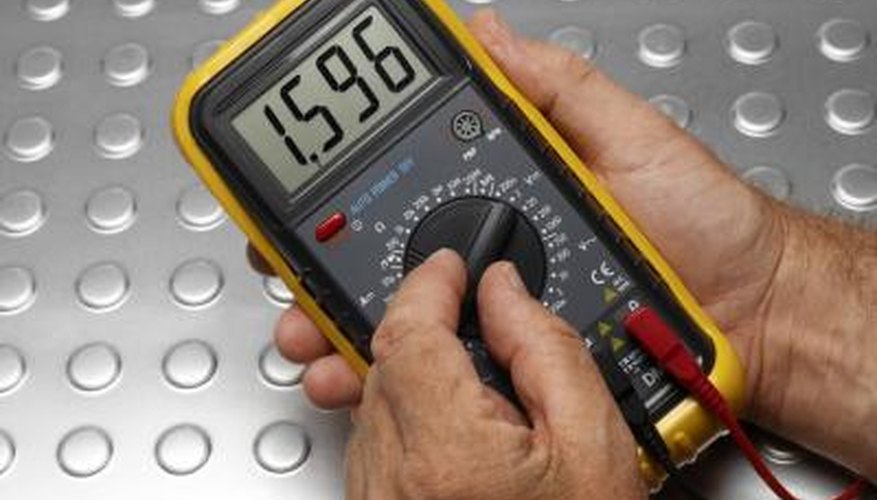The internationally agreed unit for measuring electrical current is the ampere, or amp. Modern, low-power electronic circuits have very low currents measured in thousandths of an amp. An LED, for example, draws just 10 or 20 thousandths of an amp. The term for a thousandth of an amp is a milliamp, so when a digital meter measures current in milliamps it's actually measuring thousandths of an amp.
- The internationally agreed unit for measuring electrical current is the ampere, or amp.
- The term for a thousandth of an amp is a milliamp, so when a digital meter measures current in milliamps it's actually measuring thousandths of an amp.
Switch on the multimeter. If it has a "Battery Test" feature, use it before proceeding further, and replace the battery if it fails the test. Select the "Milliamp" setting if it's available. Alternatively use the "Current" setting and select a range to measure in milliamps.
Check the two test leads and probes for damage, such as cracked insulation and heat damage. When you're satisfied that the leads and probes are in good condition, connect them to the multimeter. The black lead goes to the "COM" jack; the red lead goes to the "+" or plus jack -- unless the meter has a milliamps jack. In that case, connect to that rather than the "+" jack.
Switch off the power to the circuit. Break the circuit at the point where you need to measure the current. Attach the two meter probes to either side of the break so the meter is placed in series with the circuit.
- Check the two test leads and probes for damage, such as cracked insulation and heat damage.
- Break the circuit at the point where you need to measure the current.
Switch on the power to the circuit and observe the meter reading. The digital display shows the current, in milliamps, flowing through the circuit. Record the value.
TIP
Check that the meter is reading zero before you use it. Even a small initial error can be significant when measuring very low currents.
WARNING
Unless you're certain that the current is less than 1 amp, don't use a milliamp scale for the first reading. Start with the highest range available and keep reducing it until the appropriate range is found.
